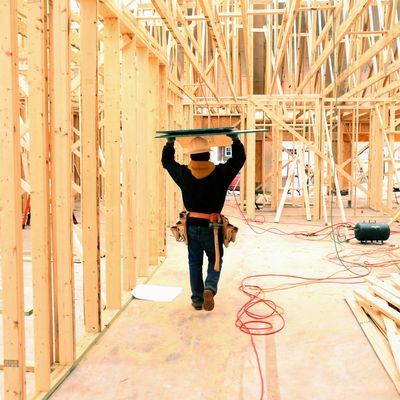
For tech companies seeking to become the backbone of the modern smart home, one of the best places to gain a foothold isn’t through selling you a smart speaker — it’s by getting in while sheetrock is still being hung. Both Apple and Amazon have aggressively worked with major home developers to install their proprietary platforms in new homes, in Apple’s case HomeKit and in Amazon’s case Alexa. Sell a home stuffed with your smart-home tech and you get a chance to lock someone into your platform and sell them a variety of other gadgets down the line.
As it stands now, Amazon seems to be winning the battle. As detailed by Aaron Tilley and Priya Anand at the Information, Apple struck a deal with Lennar, the second-largest home builder in the U.S., to install HomeKit devices in 2016. But that deal eventually fell through. Lennar switched to using Alexa devices at the end of 2017, and a host of other home builders are doing the same.
There are several reasons for this. Until recently, Apple required all device-makers using the HomeKit protocol to install an Apple-specified chip during manufacturing. That Apple managed to get a fair number of manufacturers onboard speaks to the immense power the company wields, and the desire of manufacturers to get that Apple logo on the box. But a company-favored chip created massive headaches for both manufacturers and users — pity the Philips Hue Light Bulb early adopter who realized they would need to buy an entirely new set of light bulbs with the HomeKit chip installed. Amazon, meanwhile, worked to get Alexa on as many devices as possible; the number of devices that can work with Alexa far outstrips those that work with Apple’s HomeKit.
Amazon also has the advantage of being more agnostic about the other devices you use in your home. While both the Echo and the Apple HomePod theoretically allow homeowners to control their smart devices through voice commands, setting all this up (and troubleshooting the inevitable problems) will still require a smartphone or tablet. If your home is built with Apple HomeKit, that means you have to use an iOS device. While iOS is still wildly popular in the United States (it commands 45 percent of the American marketplace) Android remains the most popular mobile OS. For a home developer sinking money into installing smart-home tech, automatically discounting more than half of your potential buyers may have limited appeal.
The bottom line is that Amazon’s Alexa platform is seen as the more open platform, and therefore more appealing to home developers. “Apple is closed source about what will talk to their system, so we shied away from it,” said C.R. Herro, a vice-president with Arizona-based Meritage Homes, speaking to the Information. “I don’t want to restrict what I think the future could be because I have no idea what it will be.”
Meanwhile, appetite for smart-home tech is growing among new home buyers. A survey by Coldwell Banker found that those buying a new home (whether newly built or an existing unit) were eager to have smart-home tech installed: More than three quarters wanted a smart thermostat system, and six out of ten were interested in smart lighting, smart locks, and smart cameras.
Noticeably absent in all of this? Google, which was second to market with its Google Home smart speaker. The Information reports that Google had talked to several home developers about using its technology, but so far talks have fallen through.
That said, new homes are a small part of the market. Just 10 percent of homes sold in the U.S. are newly built. Still, default bias is a powerful market force. Move into a home where you’re automatically talking to Siri or Alexa and you’ll likely continue doing so, if only because switching everything requires time, effort, and money — something we’re all loath to spend.





























